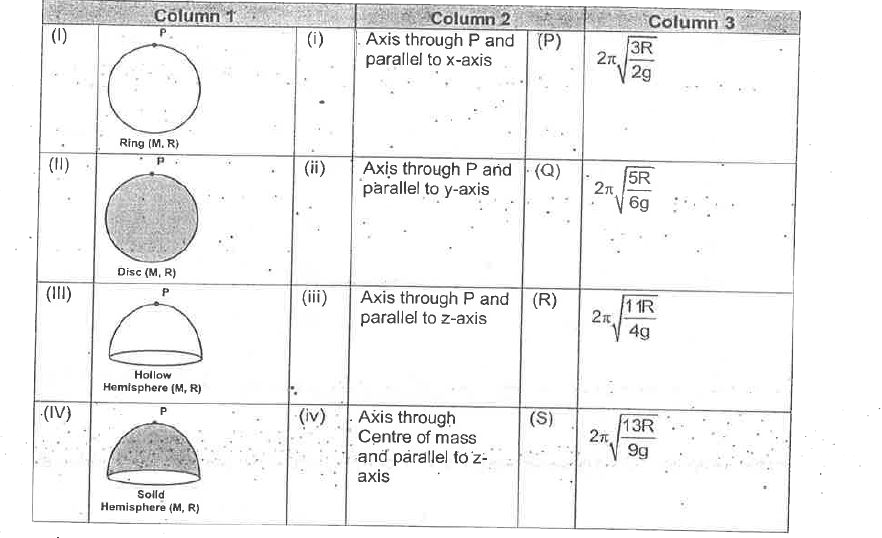A : Receptors in the tendon , joints give information regarding the posilion and movements of different parts of the body.
R : These are termed as nocl-receptors.
If both Assertion & Reason are true and the reason is the correct explanation of the assertion, then mark (1).
If both Assertion & Reason are true but the reason is not the correct explanation of the assertion, then mark (2).
If Assertion is true statement but Reason is false, then mark (3).
If both Assertion and Reason are false statements, then mark (4).
The correct Answer is:C
Step by step video, text & image solution for A : Receptors in the tendon , joints give information regarding the posilion and movements of different parts of the body. R : These are termed as nocl-receptors. by Biology experts to help you in doubts & scoring excellent marks in Class 12 exams.
Updated on:21/07/2023Topper's Solved these Questions
- NEURAL CONTROL AND COORDINATION Book:AAKASH INSTITUTEChapter:NEURAL CONTROL AND COORDINATION Exercise:Assignment SECTION - C (Previous Year Questions )
Explore 64 Videos
- MORPHOLOGY OF FLOWERING PLANTSBook:AAKASH INSTITUTEChapter:MORPHOLOGY OF FLOWERING PLANTSExercise:TRY YOURSELF
Explore 38 Videos
- ORGANISMS AND POPULATIONS Book:AAKASH INSTITUTEChapter:ORGANISMS AND POPULATIONS Exercise:ASSIGNMENT (SECTION-D) (Assertion-Reason Type Questions)
Explore 15 Videos
Similar Questions
Give the term for the spread of cancer from one part to other parts of the body.
View SolutionRead the assertion and reason carefully to mark the correct option out of the options given below:
(a) If both the assertion and the reason are true and the reason is a correct explanation of the assertion
(b) If both the assertion and reason are true but the reason is not a correct explanation of the assertion
(c) If the assertion is true but the reason is false
(d) If both the assertion and reason are false
(e) If the assertion is false but reason is true
Assertion : Electorcardiogram is record of electrical activity of the heart which shows certain waves called P,Q,R,S and T waves.
Reason : It gives important information concerning the spread of excitation to the different parts of heart and it is of value in the diagnosis of cases of abnormal cardiac rhythm and myocadial damage.
View Solution
Knowledge Check
[A] : Receptors located in tendons, joints and skeletal muscle give information regarding the position and movement of various parts of body.
[R]: These are called Algest receptors.AIf both A and R are true and R is the correct explanation of ABIf both A and R are true but R is not the correct explanation of ACIf A is true and R is falseDIf both A and R are falseThe receptors found in the muscles, tendons and joints are
ATeloreceptorsBProproceptorsCInterceptorsDNone of these[A] : [A]: ECG is a record of electrical activity of the heart that shows certain waves called PQRS and T waves.
[R]: It gives important information concerning the spread of excitation to the different parts of heart and helps in diagnosis of heart disor- ders.AIf both A and R are true and R is the correct explanation of ABIf both A and R are true but R is not the correct explanation of ACIf A is true and R is falseDIf both A and R are false
Look at the following sentence from the story:
Suddenly a strong wind began to blow and along with the rain very large hailstones began to fall.
'Hailstones' are small balls of ice that fall like rain. A storm in which hailstones fall is a 'hailstorm’. You know that a storm is bad weather with strong winds, rain, thunder and lightning.
There are different names in different parts of the world for storms, depending on their nature. Can you match the names in the box with their descriptions below, and fill in the blanks? You may use a dictionary for help.
1. A violent tropical storm in which strong winds move in a circle: _ _ c _ _ _ _.
2. An extremely strong wind: _ a _ _.
3. A violent tropical storm with very strong winds: _ _ p _ _ _ _.
4. A violent storm whose centre is a cloud in the shape of a funnel: _ _ _ n _ _ _.
5. A violent storm with very strong winds, especially in the western Atlantic Ocean: _ _ _ r _ _ _ _ _.
6. A very strong wind that moves very fast in a spinning movement and causes a lot of damage: _ _ _ _ l _ _ _ _.
View SolutionGive the main function Receptor proteins in the body of human beings ?
View SolutionIdentify the joint 'X' shown in given figure. What kind of movement does it allow? Name the body parts in which it is present.

View SolutionAssertion: Joints are essential for all types of movement Involving the bony parts of the body.
Reason: Joints are point of contact between bone and cartilages.
View SolutionThe following situation regards the physical pendulum. Column-1 gives the different types of bodies. Column -2 gives the different axes about which they can possibly perform SHM. Column-3 gives possible time periods. (The plane of the four figure is the vertical plane)


Pick the option for minimum value of VA
View Solution

